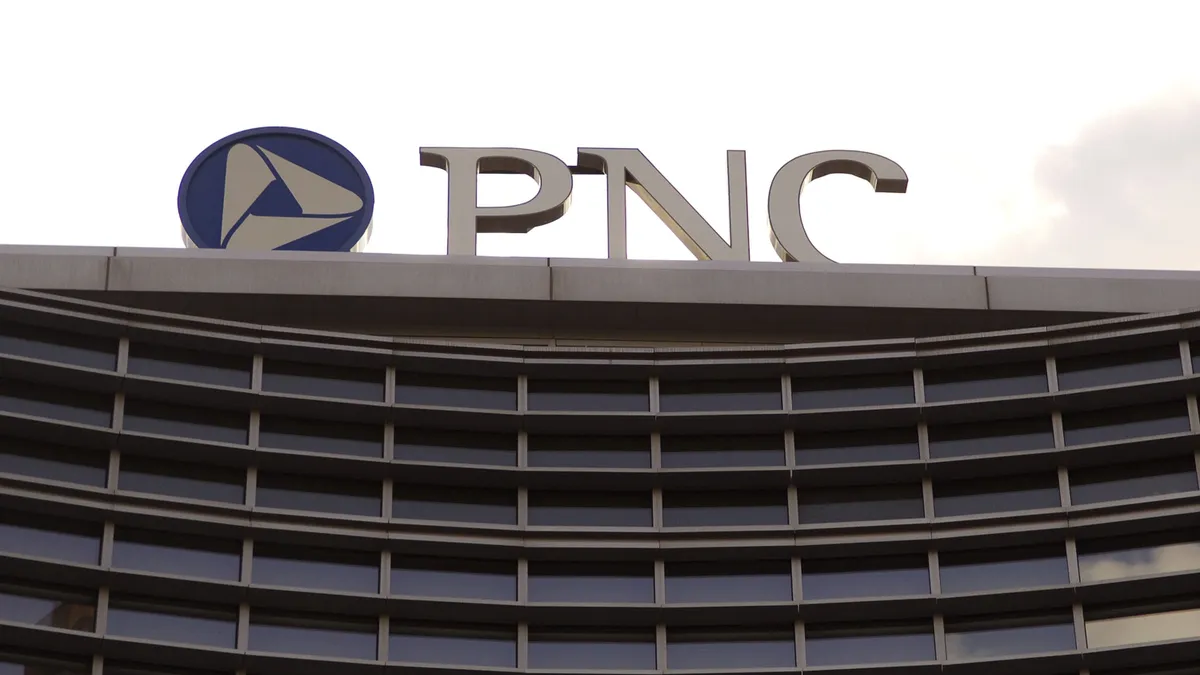Wells Fargo saw a 9% drop in net interest income over the second quarter, the bank said Friday, citing higher costs as competition for customer deposits has intensified.
The San Francisco-based lender felt the impact of lower deposit balances and customers moving their money to deposit offerings with higher yields in its consumer and wealth segments, the bank said in second-quarter earnings materials.
Wells also saw increased deposit costs in its commercial, corporate and investment-banking units, the bank said Friday.
Loan balances were also lower for Wells, as loan demand remains largely muted across the industry. Net interest income, which amounted to $11.9 billion for the quarter, refers to the difference between the interest a bank pays on deposits and the interest it collects on loans.
Wells Fargo expects its full-year net interest income to decline 7% to 9% from last year’s $52.4 billion. The bank’s second-quarter net income slipped about 1%, to $4.9 billion.
During a conference call with analysts Friday, Wells CFO Mike Santomassimo noted consumers are still moving their money from checking accounts into savings and certificates of deposit “but at a slower pace.” Santomassimo said he expects further migration, but believes it’ll continue to slow.
On the commercial side, the bank’s deposit growth puts some near-term pressure on net interest income as Wells strives to remain competitive on pricing, but it’s a long-term positive to have those deposits — especially once interest rate cuts occur, Santomassimo said.
Wells has also launched a number of new credit cards in recent years, one of CEO Charlie Scharf’s initiatives when he joined the bank in 2019. After an analyst mentioned a recent Wall Street Journal article that reported the bank is losing millions every month on a co-branded credit card with fintech Bilt, Scharf sought to brush aside any concerns, deeming that program a “very, very, very small piece” of the bank’s overall credit card roster and noting bank executives are conscious of potential risks.
As Wells aims to reduce its reliance on net interest income, the bank has looked to its investment-banking unit for a boost. Higher investment-banking fees during the quarter helped fuel non-interest income’s 19% jump, to $8.8 billion. The bank has pulled executives from JPMorgan Chase in recent months to help boost its corporate dealmaking and trading business.
JPMorgan gets a boost from fees
With an uptick in mergers and acquisitions and capital markets activity, investment banking also gave JPMorgan a lift during the quarter: The bank’s fees generated from investment banking soared 50%, according to second-quarter earnings materials.
At JPMorgan, however, net interest income rose 4%, to $22.9 billion, driven in part by higher revolving balances on credit cards. The bank’s CFO, Jeremy Barnum, said loan demand remains muted everywhere except in credit cards.
For Wells, office properties continue to drive commercial real estate losses, which increased in the second quarter after declining in the first quarter. In June, Santomassimo noted strain in the institutional office space, calling out older office buildings in some metro areas as those seeing the most stress.
Deterioration in the CRE office portfolio drove up nonperforming assets about 5%, to $8.65 billion. However, “the portfolio is small, and the overall NPA rate is still only 0.9% of loans,” Oppenheimer analyst Chris Kotowski wrote in a note to clients.
The bank expects those CRE office losses to remain “lumpy,” as it works with clients and tries to “to de-risk our office exposure,” Santomassimo said Friday.
Wells remains constrained by a $1.95 trillion asset cap tied to the 2016 fake-accounts scandal. The bank continues to make steady progress on improving its control environment, although Scharf noted it’s up to regulators to decide when necessary work has been completed.
“The industry operates in a heightened regulatory oversight environment, and we remain at risk of further regulatory actions,” he added.






















